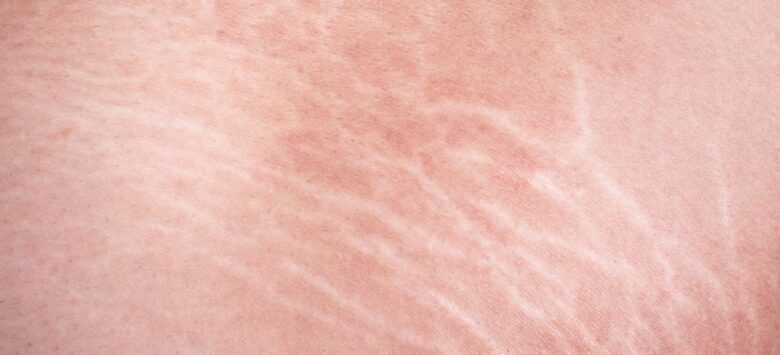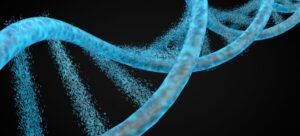Stretch marks, medically known as striae, are a common skin condition that affects people of all ages and genders. While they are not harmful, they can be a source of concern for many due to their appearance. In this article, we’ll explore what causes stretch marks, the factors that increase your risk, and practical tips to manage and prevent them.
What Are Stretch Marks?
Stretch marks are long, narrow streaks or lines that develop on the skin. They occur when the skin is stretched rapidly, causing the middle layer of the skin (dermis) to tear. This tearing creates visible marks that can range in color from red and purple to silver and white, depending on their age and severity.
How Stretch Marks Form
The skin is made up of three layers:
- Epidermis: The outer layer.
- Dermis: The middle layer, responsible for skin elasticity and strength.
- Subcutaneous Layer: The innermost layer of fat and tissue.
When the dermis is stretched beyond its capacity, the collagen and elastin fibers break, leading to the formation of stretch marks.
Common Causes of Stretch Marks
Several factors can cause or contribute to the development of stretch marks:
1. Rapid Weight Changes
- Weight Gain: Sudden increases in body weight can stretch the skin, leading to tears in the dermis.
- Weight Loss: Rapid weight loss can also cause stretch marks as the skin struggles to adjust to the change.
2. Pregnancy
- Many women develop stretch marks during pregnancy, especially in the later stages when the skin stretches to accommodate the growing baby.
- Hormonal changes during pregnancy also weaken skin fibers, making them more prone to tearing.
3. Growth Spurts
- Adolescents often develop stretch marks during puberty due to rapid growth in height or weight.
4. Hormonal Changes
- Hormones such as cortisol can weaken the skin’s elastic fibers. High cortisol levels, often seen in conditions like Cushing’s syndrome or prolonged stress, increase the risk of stretch marks.
5. Genetics
- If your parents or close relatives have stretch marks, you are more likely to develop them. Genetics play a significant role in skin elasticity and resilience.
6. Medical Conditions
- Certain conditions, such as Marfan syndrome or Ehlers-Danlos syndrome, affect the connective tissues, increasing susceptibility to stretch marks.
7. Use of Steroid Medications
- Long-term use of corticosteroids, whether topical or oral, can decrease skin elasticity, making it more prone to tearing.
Who Is at Risk?
While anyone can develop stretch marks, certain groups are more susceptible due to specific factors:
1. Pregnant Women
- Up to 90% of women experience stretch marks during pregnancy, particularly on the abdomen, breasts, hips, and thighs.
2. Adolescents
- Rapid growth during puberty often leads to stretch marks on the thighs, hips, and lower back.
3. Athletes and Bodybuilders
- Muscle growth from intense training can stretch the skin, leading to stretch marks, especially on the arms, shoulders, and chest.
4. Individuals with Genetic Predisposition
- Those with a family history of stretch marks are more likely to develop them.
5. People Experiencing Rapid Weight Changes
- Significant weight gain or loss, whether intentional or unintentional, increases the likelihood of stretch marks.
Tips to Manage and Prevent Stretch Marks
While it’s not always possible to completely prevent stretch marks, there are steps you can take to reduce their appearance or minimize the risk:
1. Keep Your Skin Hydrated
- Moisturize daily with creams or oils that contain ingredients like cocoa butter, shea butter, or hyaluronic acid to improve skin elasticity.
2. Maintain a Balanced Diet
- Eat foods rich in vitamins A, C, and E, as well as zinc and silica, to support skin health and collagen production.
3. Stay Hydrated
- Drinking plenty of water helps maintain skin elasticity and reduces dryness, which can worsen stretch marks.
4. Avoid Rapid Weight Changes
- Aim for gradual weight loss or gain to give your skin time to adjust.
5. Use Retinoid-Based Creams
- Topical treatments containing retinol or tretinoin can help improve the texture and color of stretch marks by promoting collagen production.
6. Seek Professional Treatments
- Consider options like laser therapy, microdermabrasion, or chemical peels to reduce the appearance of stretch marks.
Are Stretch Marks Permanent?
Stretch marks are a natural part of the skin’s response to stretching and may fade over time. While they may never disappear completely, their appearance can be minimized with proper care and treatment.
Conclusion
Stretch marks are a normal part of life for many people and are often linked to growth, changes in the body, or genetics. Understanding the causes and risk factors can help you take proactive steps to manage and prevent them. Remember, stretch marks are not a flaw—they’re a testament to the resilience of your body.




